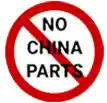Posted on April 21, 2025 fred parker Aviation
Circuit breakers and fuses both serve to ensure effective electrical protection across commercial, residential, and industrial environments, interrupting the flow of electricity when an overload or short circuit is detected. However, their ideal applications and the means by which they detect and respond to current surges differ. In this blog, we will explore the distinctive traits of circuit breakers and fuses, helping readers be better equipped to choose between these two forms of overcurrent protection for a given setup.
Circuit breakers use electromechanical mechanisms to detect and interrupt excess current. Inside most standard breakers is a combination of internal components like a bimetallic strip and/or an electromagnetic solenoid. The bimetallic strip responds to prolonged overcurrent by bending as it heats up, while the solenoid reacts instantly to short-circuits by generating a magnetic force strong enough to actuate a spring-loaded switch that rapidly opens contacts and breaks the circuit. Most circuit breakers also feature external toggles or levers for manual switching and reset, enabling quick restoration of power once the fault has been addressed.
Ideal Applications
Circuit breakers are favored in complex or high-demand environments where frequent adjustments are necessary. As they are reusable and sometimes boast broader control options, they are particularly suitable for industrial facilities, commercial buildings, and large-scale electrical panels.
Popular Subtypes
Miniature Circuit Breakers (MCBs): Meant for low-voltage applications, MCBs typically handle current ratings up to 32 amps. They utilize thermal or thermal-magnetic trip mechanisms to respond to overloads and short circuits, typically in residential and light commercial settings. Molded Case Circuit Breakers (MCCBs): Fitting for medium-voltage industrial settings like motor control centers, large machinery, and sub-panel protection, MCCBs can handle around 2,500 amps. They also tend to provide adjustable trip settings, allowing users to tailor protection thresholds for different equipment and load demands. Ground Fault Circuit Interrupters (GFCIs): These breakers are designed to detect ground faults and protect personnel from electric shock. GFCIs measure the imbalance between incoming and outgoing current, tripping within milliseconds when leakage is detected. Commonly used in wet or damp locations like bathrooms, kitchens, and outdoor outlets, GFCIs are also essential in industrial settings where workers operate electrical equipment near conductive surfaces or moisture.
Fuses
A fuse is a sacrificial device containing a metal wire or filament that melts when exposed to a current beyond its rated capacity, effectively stopping the flow of electricity and preventing further damage to the circuit. This breaks the fuse, meaning it must be replaced after it blows. Despite their one-time use, their simple construction and low cost make them a widely adopted and economical option for electrical protection.
Best-Suited Applications
Fuses are especially effective in systems that demand a rapid response to electrical faults, their minimalistic design providing high reliability when operating in predictable conditions with low fault incidence. As a result, they are well-suited for compact systems, consumer electronics, power supplies, and low-maintenance installations where downtime is not a critical concern.
Common Variants
Cartridge Fuses: These fuses are available in a range of sizes and current ratings to protect everything from lighting circuits to HVAC systems, two main subcategories being general-purpose and high-voltage. Their enclosed design helps prevent accidental contact and arc exposure during replacement.
High Rupturing Capacity (HRC) Fuses: Built for high-voltage systems and industrial machinery, HRC fuses consist of a robust ceramic or fiberglass body filled with an arc-quenching material like silica sand. They can safely interrupt high fault currents without arc propagation or exploding, making them suitable for power distribution systems, transformers, and heavy-duty motor circuits.
Resettable Fuses: Also known as polymer positive temperature coefficient (PTC) fuses, these are unique from other types as they automatically reset after a fault condition is cleared. The polymer material heats up when an overcurrent occurs to increase its resistance and limit current flow, and once the fault is removed and the component cools, the fuse returns to its original low-resistance state. As such, these fuses are frequently used in telecommunications, consumer electronics, and rechargeable battery packs.
Other Purchasing Considerations for Circuit Breakers vs Fuses
Speed and Sensitivity
Fuses tend to react to short-circuit conditions in less than a millisecond, which makes them effective for protecting a wide range of sensitive electronic equipment. However, most circuit breakers are not significantly slower, providing fast, selective coordination and adjustable trip setting for more precise fault detection.
Cost
Fuses are generally less expensive upfront, with individual units costing less than most circuit breakers, though their replacement may increase long-term maintenance costs in systems prone to frequent faults. Circuit breakers, despite a sometimes higher initial investment, can be reset after tripping many times. In operations where uptime is critical and faults are likely, breakers could reduce expenses and eliminate the need for excess spare inventory.
Source Electrical Protection Components from Buy Industrial Parts
Featuring various fuse types, circuit breakers, and other industrial circuit protection items, Buy Industrial Parts offers a comprehensive selection of premium components from trusted manufacturers. Our website presents detailed listing information, helping you streamline your search using part numbers, part types, and other common designations. To learn more about our unmatched procurement services, get in touch with a member of our team by phone or email; we are prepared to curate the most competitive and timely options to meet your requirements.
 The only independent
The only independent

“We Proudly Support Intrepid Fallen Heroes Fund that serves United States Military Personal experiencing the Invisible Wounds of War : Traumatic Brain Injury (TBI) and Post Traumatic Stress (PTS). Please visit website (www.fallenheroesfund.org) and help in their valiant effort”.
We hope that you will visit us again the next time you need industrial parts and make us your strategic purchasing partner.
Request for Quote